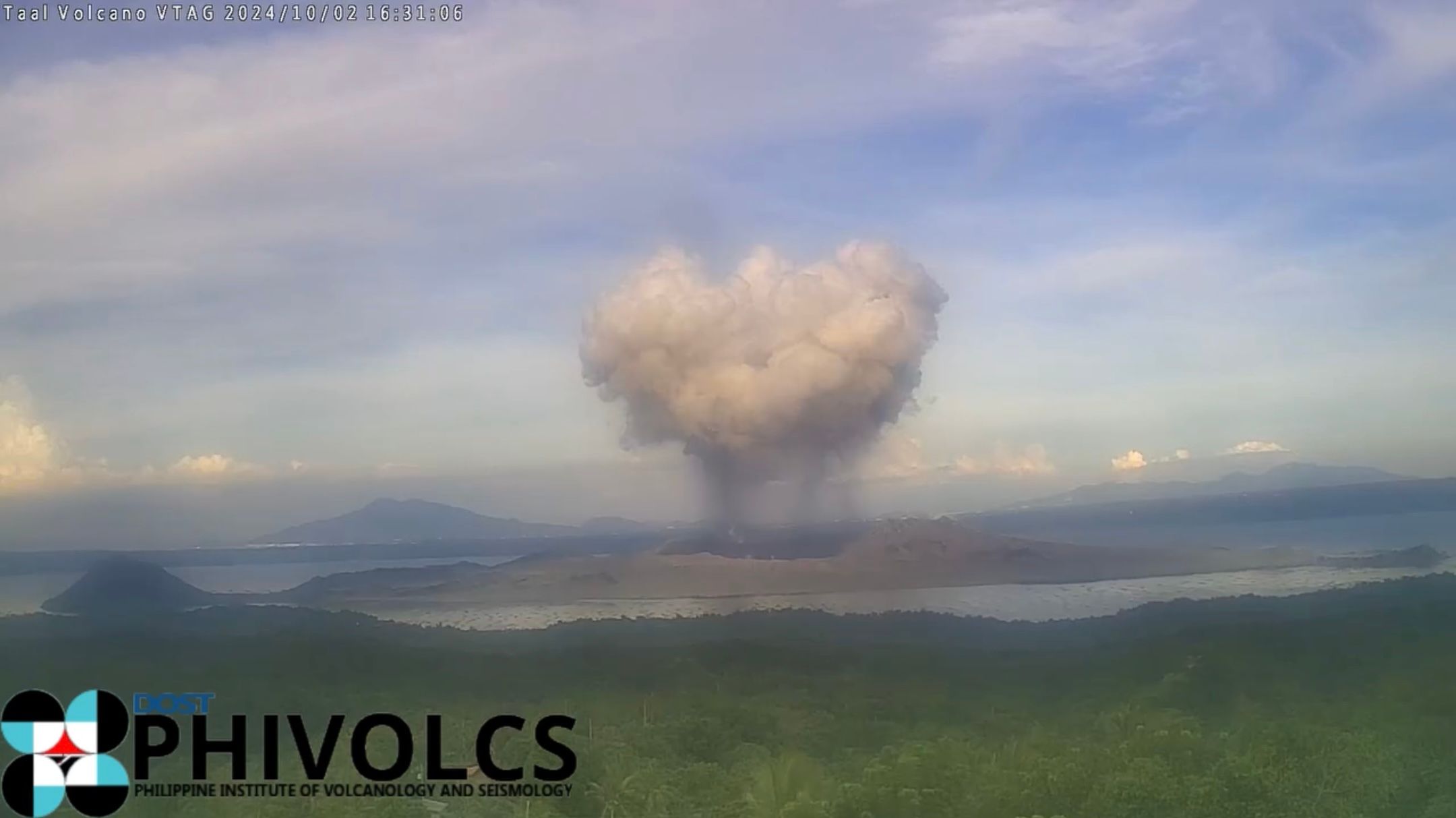Phreatic vs phreatomagmatic: What happened during Taal Volcano's eruption on October 2?

Taal Volcano has experienced multiple phreatic eruptions this year, but on Oct. 2, a phreatomagmatic eruption took place.
Philippine Institute of Volcanology and Seismology (Phivolcs) Director Teresito Bacolcol said Taal Volcano had 49 phreatic eruptions since April before the phreatomagmatic event.
But what distinguishes a phreatomagmatic eruption from a phreatic eruption?
In a televised briefing on Thursday, Oct. 3, Bacolcol explained that phreatic eruption occurs when water comes into contact with hot volcanic materials, such as rocks or gases.
He added that no magma is involved in a phreatic eruption.
Meanwhile, Bacolcol said a phreatomagmatic eruption occurs when magma comes into contact with water, resulting in the production of steam, ash, and occasionally fragmented volcanic materials.
2020 vs 2024 eruption
Bacolcol also noted that Taal Volcano’s eruption in 2020 started as a phreatomagmatic eruption that escalated into a sub-plinian eruption, producing a plume that reached up to 15 kilometers.
In contrast, the plume from the Oct. 2 eruption only reached 2.4 kilometers.
He added that during the 2020 eruption, dispersed ash affected areas as far as Metro Manila. This time, there have been no reports of ash reaching the provinces surrounding Taal Volcano.
“We expect that such events may occur repeatedly, as long as we have the right ingredients, such as water and hot volcanic materials or magma,” he said in Filipino.
Alert level 1 stays
Phivolcs said Taal Volcano’s alert status remains at level 1 amid its phreatomagmatic eruption.
Bacolcol said Phivolcs is closely monitoring several parameters before considering raising the alert level to 2.
“We are particularly watching for the frequency of volcanic earthquakes, which have not been observed recently. In fact,we have recorded no volcanic earthquakes at Taal Volcano in the past 24 hours,” he pointed out.
Bacolcol added that sulfur dioxide (SO₂) emissions recorded in the past 24 hours were relatively low, totaling only 2,532 tons.
There are also currently no signs of inflation at the volcano, which means there is no need to raise the alert level at this time, he said.